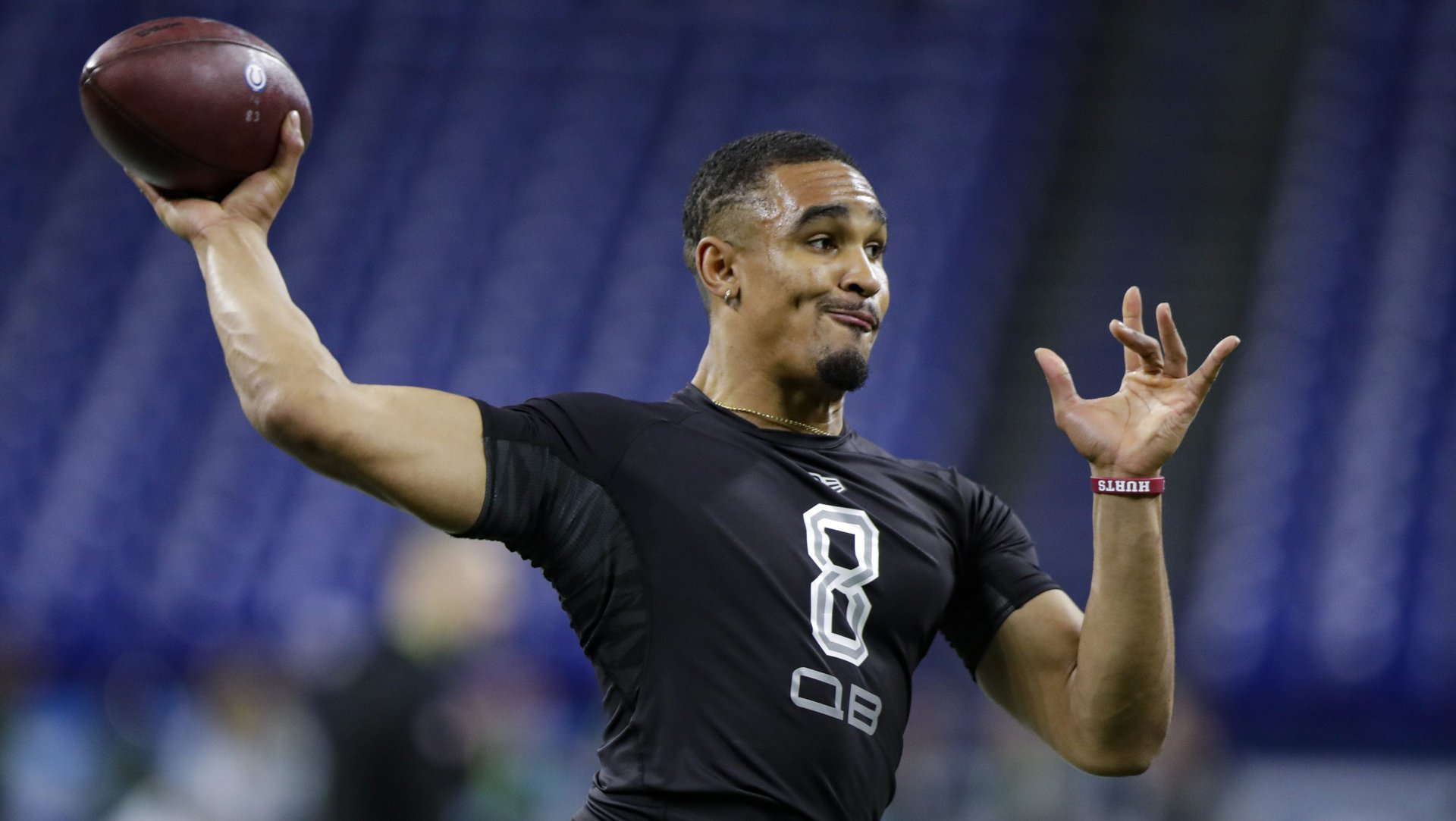The NFL Draft has never been bigger—and neither has the NFL
Tonight, ABC and ESPN will broadcast the first live sports event from one of the major US sports leagues since the coronavirus pandemic forced the suspension of leagues in March: the NFL Draft.


Tonight, ABC and ESPN will broadcast the first live sports event from one of the major US sports leagues since the coronavirus pandemic forced the suspension of leagues in March: the NFL Draft.
Though not an athletic competition in the traditional sense, the draft should nonetheless provide fans with some of the inherent suspense and unpredictability they’ve lost with games themselves halted. And because there are virtually no real sports on TV, the event could further solidify the National Football League’s dominance in the US.
The NFL lucked out, relative to other US leagues. The National Basketball Association (NBA) and the National Hockey League (NHL) both suspended games in mid-March, shortly before they were scheduled to start postseason play. Major League Baseball (MLB) canceled the start of its season a few weeks later, and has yet to announce whether or not it can return in any capacity this summer. It’s unclear when—or if—these leagues can resume their seasons in 2020.
But football has been largely unaffected so far. Outside of the draft, the NFL doesn’t generate revenue this time of the year to. (The season officially begins in September and ends with the Super Bowl in early February.) Its largest inconvenience is that players cannot meet at their teams’ training facilities to prepare for the season and are thus forced to participate in a “virtual offseason” programs using videoconferencing and at-home workouts. The draft, too, will be held virtually, instead of in Las Vegas as planned.
Even before coronavirus, the NFL was entrenching itself as the most lucrative sports entity in the world. After a sluggish period in the mid-2010s, the league’s TV ratings have returned to previous levels thanks in part to fantasy sports, legalized sports betting, and an improved on-field product. Its viewership increased for the second straight year in 2019, even as the traditional TV audience for almost every other type of content shrunk again, as more and more Americans cut the cord. Survey after survey shows Americans value live sports over most other entertainment offerings—and football is America’s most popular sport. The league was paid nearly $40 billion from US TV networks in exchange for the rights to broadcast its games through 2022.
The draft was becoming more popular even when it had the NBA and NHL playoffs and the start of the MLB season to compete with. Ratings for the event have increased every year since 2015:
This year’s draft should shatter records again. The demand for live sports-related content may never be higher than it is at this very moment.
According to a Nielsen study of “heavy sports viewers” (the top 20% of Americans who were watching the most live sports a month ago), sports fanatics have spread their viewing elsewhere now that all professional leagues have halted play: 17% of their time is going to news, 17% to movies, 7% to subscription video, and so on. But they’re still spending 10% of their viewing time watching “sports-related programming,” even though the pickings are quite slim.
The first two episodes of ESPN’s Michael Jordan documentary, The Last Dance, garnered record ratings for the network earlier this week. More than 6 million Americans tuned in—the most for an ESPN original content broadcast since 2004. Fans were tweeting rabidly about the documentary as if it were an NBA championship game. The Last Dance would have been popular anyway, but the pandemic means Americans will likely tune into any new sports content they can find in droves.
Demand for TV advertising space during tonight’s draft has reached “unprecedented levels,” Reuters reported, citing an ad sales executive at Disney, which owns ESPN. The network is expecting a huge audience, both because of the lack of competition on the airwaves but also because this year’s draft class has several big-name quarterbacks, like Heisman trophy winner Joe Burrow and Alabama’s Tua Tagovailoa, whose injury history is adding to the suspense of his selection.
Like every live TV event during the pandemic, the draft will still be at the mercy of technology. Team staff will be making their picks from their respective homes, while the players watch on TV like everyone else. (Some players who are expected to be selected in the first round have TV cameras trained on them too, and we’ll see their live reactions.) General managers’ setups look like battle stations:
Tonight’s draft is the closest thing we’re going to get to live sports for awhile. And it’s full of TV-ready intrigue: unexpected moves, trades, stories of hardship and perseverance, tears, smiles, comebacks. Most other content available to viewers right now follows a formula in which outcomes are fairly predictable. But the draft is suspenseful in a different way. The league’s 32 teams will select young players who will in turn determine those teams’ futures. The NFL’s future, meanwhile, isn’t as tenuous as its competitors’.